
Things we like
- Lion-hearted engine
- Terrific steering and front-end grip
- It drifts
Not so much
- Gear select buttons are a stretch
- Dated graphics on central screen
- It’s heavy
Who knows how many engineering man-hours, how many hundreds of millions of dollars, have been spent over the past few decades trying to make SUVs – the Aston Martin DBX707 being a case in point – perform and handle like sportscars.
By any rational measure, it’s an impossible task. SUVs are the physical antithesis of a sports car – tall and heavy, with high ground clearance and mass in all the wrong places.
But we keep trying to teach elephants to tap-dance.
Foot on brake. Select launch control. Push the throttle to the floor, listen to the revs build with a guttural snarl. Sidestep the brake pedal. The Aston Martin leaps forward with an angry roar, the nine-speed transmission crisply snapping off the upshifts as the tach needle kisses the 7000rpm redline.
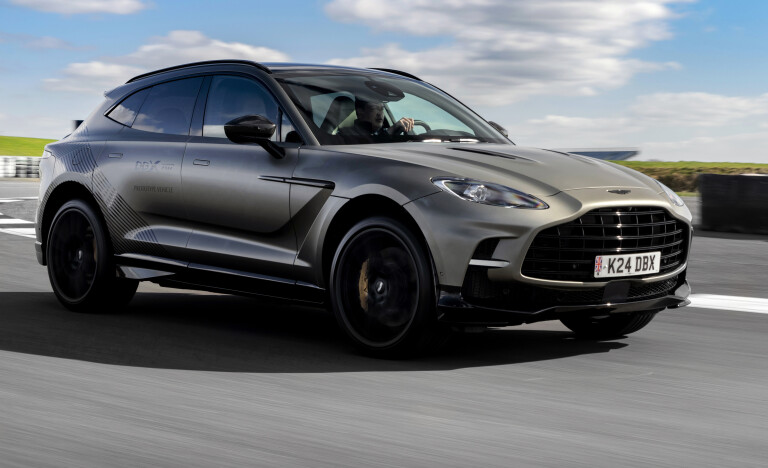
Corner! Push the giant carbon-ceramic stoppers hard. Clickety-click the left-hand paddle. Come off the brake and turn in. The front end responds immediately and the rear tracks faithfully. Punch the throttle as the apex looms.
The tail swings wide in a graceful arc. Counter-steer and keep the boot in. The Aston hangs in a beautiful drift, two turning, two burning. Wind off the lock as the giant 325/30 ZR23 Pirelli P Zeros at the rear start to bite. The Aston smoothly straightens up, then grips hard and launches at the horizon.
Okay, the Aston Martin DBX707 might be a big, heavy SUV. But it sure dances nicely.

The DBX707’s mission statement is simple: To be faster than a Lamborghini Urus, and better handling than a Porsche Cayenne Turbo Coupe.
After a brief drive at Aston’s compact Stowe Complex test track at Silverstone – forget the coy ‘prototype’ stickers on the car in the photos, it’s a production-ready unit – it’s tempting to suggest it’s ‘job done’.
Beating the Urus is the relatively easy bit. Under the bonnet is a tweaked version of the versatile M177 V8 that powers a bunch of Mercedes-AMG models as well as Aston’s own DB11 and Vantage, plus the regular DBX. Aston Martin understands this engine very well: The man who oversaw its development at AMG, Ralph Illenberger, is now the company’s head of powertrain engineering, reporting directly to the man who was his boss at AMG, Aston Martin CEO Tobias Moers.
The DBX707’s mission statement is simple: To be faster than a Lamborghini Urus, and better handling than a Porsche Cayenne Turbo Coupe

In the regular DBX the engine makes 404kW and 700Nm. In the DBX707 it makes 520kW and 900Nm, courtesy of twin-scroll turbochargers that spin on ball bearings for a faster response and to generate higher boost pressures.
That extra muscle – the DBX707’s engine is currently the most potent of all the M177 V8s, even those carrying the three-pointed star – dictated a switch to the Speedshift MCT wet clutch nine-speed automatic transmission used in high-power, high-torque Mercedes-AMG models. The transmission also offers quicker and more precise shifts than those afforded by the ZF eight-speed auto used in the regular DBX, plus a Sport+ mode with launch control, and a full manual control mode.

A new e-diff has been fitted at the rear to handle the extra torque and deliver a faster locking rate, and the all-wheel-drive system can send 100 per cent of the torque to the rear wheels.
Standard brakes are 420mm front and 390mm rear carbon-ceramic rotors that reduce unsprung weight by 40.5kg and are clamped by six-piston calipers with high-performance brake pads. The final drive ratio has been shortened by seven per cent.
Tobias Moers says the DBX707 will storm from 0 to 100km/h in 3.3 seconds, making it about a tenth slower than the Urus. But with a 310km/h top speed it’s 5km/h faster overall. Take that, Lambo.
What’s much more impressive than how the DBX707 goes is how it handles. It has the best, most authoritative front end of any super-SUV in the business
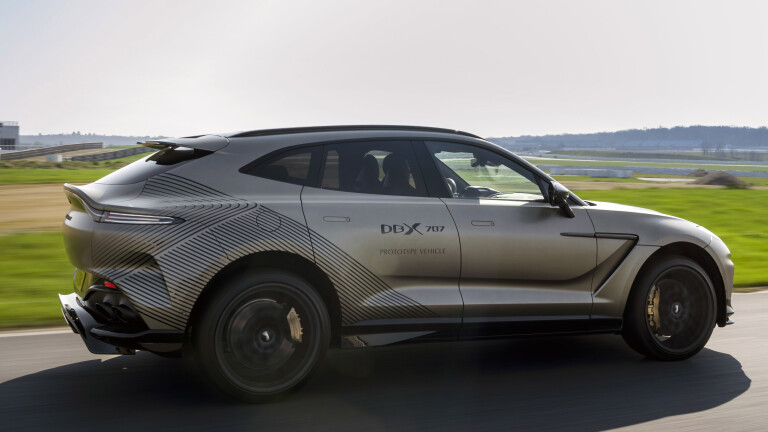
But what’s much more impressive than how the DBX707 goes is how it handles. It feels agile and responsive, not twitchy or straining at its tethers, especially on rapid changes of direction.
It has, quite simply, the best, most authoritative front end of any super-SUV in the business; precise in its response, and concise in its feedback. Turn in, and the Aston will go exactly where it is pointed. More importantly, there’s plenty of support from the rear axle, right through from corner entry to exit.
Much of that, says Moers, is the result of a major rework of the front suspension, particularly in terms of its supporting structures. A cross brace means the front shock top mounts are 55 per cent stiffer than those of the standard DBX. A 4mm underbody panel has improved torsional stiffness by 1.3 per cent to improve steering response and impact control. Front axle compression and rebound damping have been increased by 20 per cent and 10 per cent, respectively.
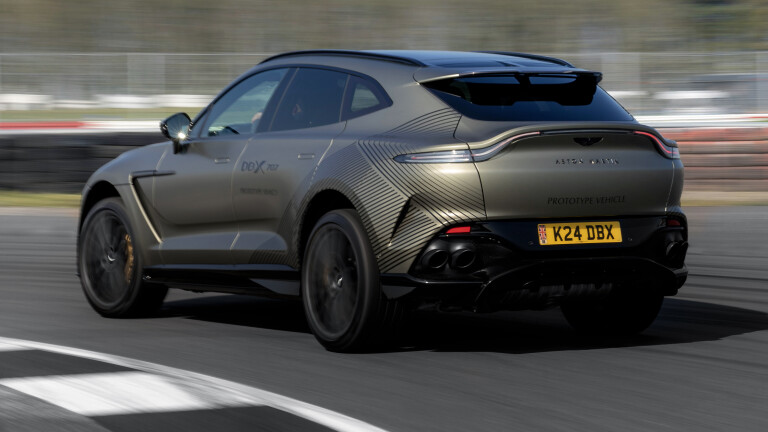
At the rear, suspension compression and rebound damping rates have been upped by 15 per cent and five per cent over the regular DBX, and the electronic active roll system has been recalibrated to deliver 50 per cent more torque on low body motions. The roll control is also now more rear-biased at higher cornering speeds to reduce understeer.
As a result, the DBX707 feels remarkably light on its feet, with none of the slightly leaden, nose-heavy feel you get when pushing a Lamborghini Urus or a Porsche Cayenne Turbo Coupe, and little of the exaggerated roll and head toss you normally feel in vehicles with a high centre of gravity.
Though tighter and tauter than a regular DBX, the ride is still impressively refined, with no harshness or jitters over small, sharp lumps and bumps.
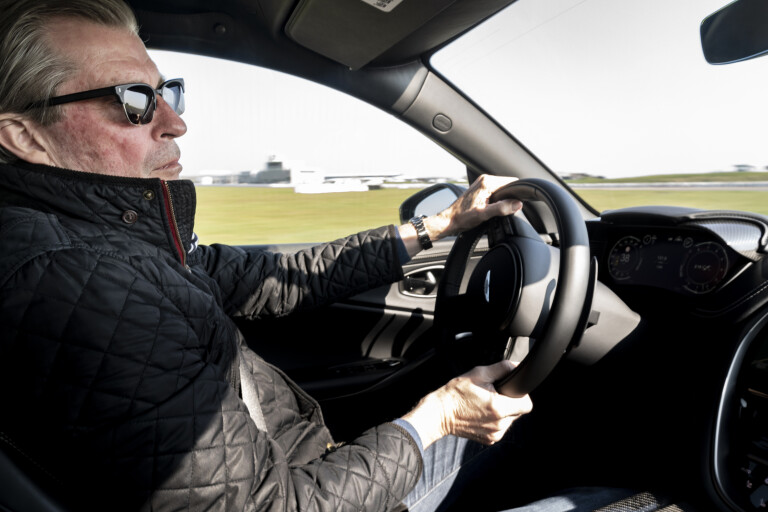
It still feels more like a grand tourer than a track monster. Looks it, too, though there’s obviously more muscle under the glamour. Up front is a bigger, bolder grille, larger cooling intakes for the brakes, and a more aggressive front splitter.
The rear fascia is also new, with quarter panel vents integrated into the bumper and a large diffuser underneath flanked by dual exhaust outlets. A larger spoiler extends from the trailing edge of the roof. Standard wheels are 22-inch alloys, shod with Pirelli P-Zero tires. The car here is on the new 23-inch wheel that’s exclusive to the 707 and available as an option.
The DBX707 feels remarkably light on its feet, with none of the slightly leaden, nose-heavy feel you get when pushing a Urus or a Cayenne Turbo Coupe
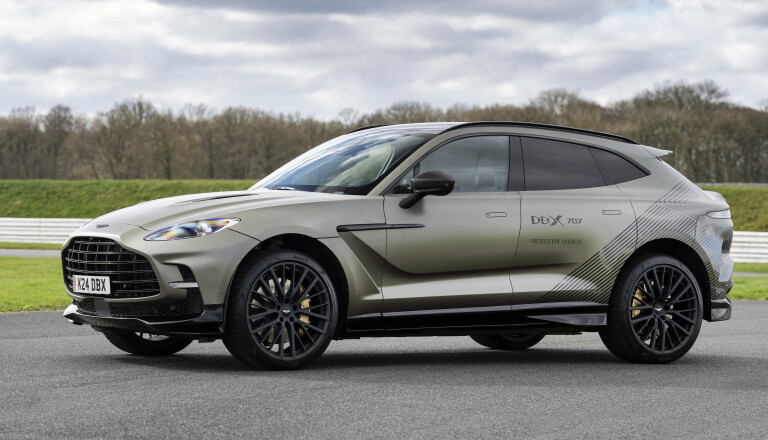
Inside, the DBX707 can be had with either sport or comfort front seats, the former offered with the unique herringbone perforation pattern on the backrest and squab featured on the car shown here.
A rotary controller has been added to the centre console to allow rapid selection of different drive modes. It’s a much better system than flicking through the steering wheel-mounted tabs as on other Aston Martins.
Our track drive was brief, and we’ll wait until we get behind the wheel on roads we know before making a definitive call but on first acquaintance, the Aston Martin DBX707 is the new benchmark super-SUV.
Because it’s not just fast. It dances, too.
Things we like
- Lion-hearted engine
- Terrific steering and front-end grip
- It drifts
Not so much
- Gear select buttons are a stretch
- Dated graphics on central screen
- It’s heavy



COMMENTS